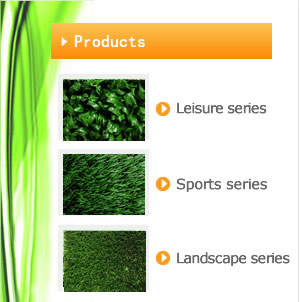
Artificial turf is a non-life plastic fiber products as raw materials, the use of the proposed method for making artificial turf. It is the solution to the use of high strength, extremely adverse growing conditions and other natural and should not be difficult to grow grass planting a lawn in an important way. Compared with natural grass, artificial turf has a very distinct advantages and disadvantages. Such as all-weather use, subject to rain, snow, weather little influence; easy maintenance, low maintenance costs; environmental protection material, the surface layer of recyclable, etc., is an irreplaceable natural lawn, therefore, artificial turf is ideal for the more frequently used primary and secondary school playground or a variety of high training ground.
Since the artificial turf is used in chemical fiber materials, but also with asphalt or concrete as a base, so its surface hardness, poor cushioning properties, can easily lead to athlete ankle and knee injuries; while its surface temperature variation amplitude, especially in the in summer, the maximum temperature of 52 ℃, such high temperatures cause a great impact on the competitive status of athletes and the environment will be. In recent years, with the construction of artificial turf fiber technology continues to update and develop materials and filler material, making the many shortcomings of the artificial turf, such as large surface hardness, buffer poor performance gradually improved, of course, these are the correct choice of materials and lawn ensuring the scientific and reasonable premise construction technology and quality, in order to be realized. Prior to the construction of artificial turf, should mainly consider the following factors: the type of artificial turf, the artificial turf fiber material (PP or PE) with; type (sand, rubber, grain, or a mixture of both) filling material and filling depth; drainage design.
